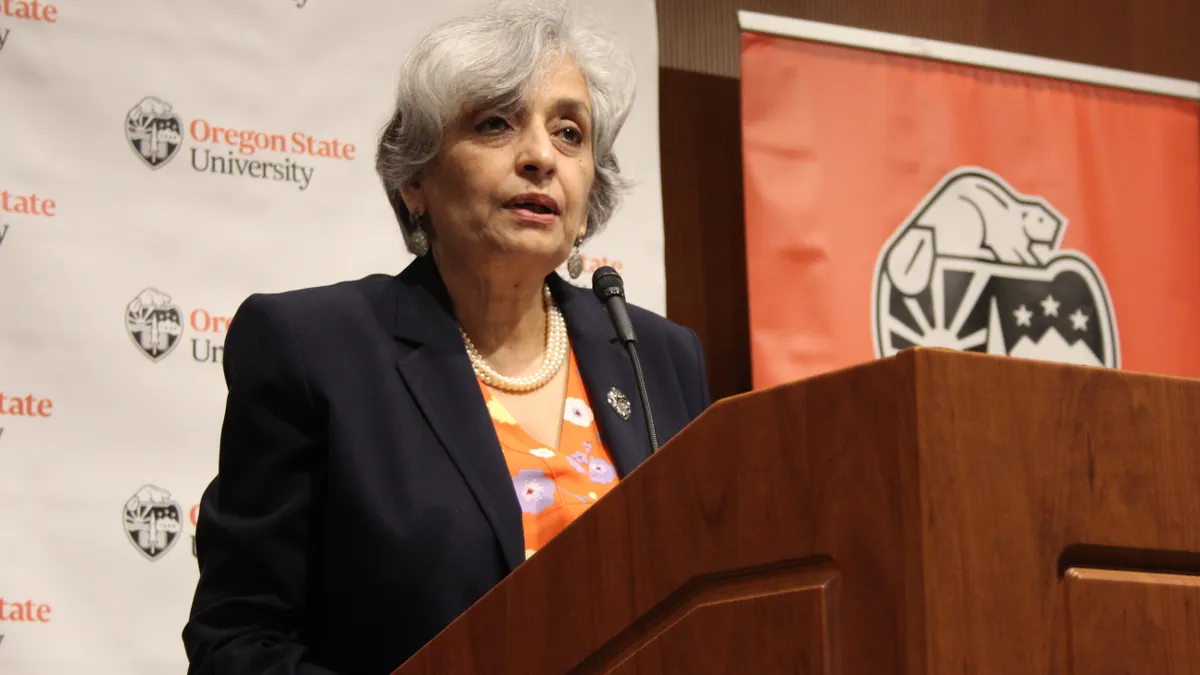Dive Brief:
- The percentage of women presidents at R1 institutions — the Carnegie Classifications’ top research designation — rose from 22% in September 2021 to 30% in May of this year, according to a new report from Women's Power Gap, a nonprofit research firm focused on gender parity in leadership roles.
- The jump stemmed from a spate of 38 new presidents at R1 colleges over the last two years, the report said. Of the newly appointed presidents, 53% were women.
- But just 13% of the new R1 presidents were women of color. The percentage of women of color in R1 presidencies only rose from 5% to 6% over the same period, the report found.
Dive Insight:
A two-year, 8 percentage point jump in women R1 presidents is a welcome change, according to Andrea Silbert, president of Women's Power Gap. The organization is an initiative of the Eos Foundation, an equity- and children-focused philanthropic fund of which Silbert also serves as president.
“This speaks to an increased awareness of the importance of having academic leadership that represents the diversity of the student population it serves," she said in a statement. "Women have outnumbered men on college campuses for decades, so it’s high time we’re starting to see more gender and racial diversity reflected in the highest roles in academia.”
Nonetheless, the report found the state of gender parity in university leadership still leaves much to be desired. Fewer than 30% of R1 board chairs are women.
Moreover, 39% of the 146 institutions have never had a woman president. The 57-college list includes prestigious private institutions, like Yale and Georgetown universities, and large public flagships, like the University of Maryland and the University of Oregon.
The report suggests that the problem is not with the pipeline, noting that while women make up 39% of provosts, their share drops to 30% of campus presidents and 0% of system presidents.
The Ivy League "leads the way," according to the report, with 75% — or 6 of the 8 institutions — having women presidents.
The intersection of gender and racial data highlights further areas needing improvement, the report said.
Just 3% of the R1 women presidents are Asian. And the percentage is even lower for Black and Hispanic women, at 2% and 1% respectively.
A lack of transparency hinders tracking diversity progress. No R1 institution discloses diversity data about its leadership or board members, according to the report. Researchers said they calculated racial data for the report using publicly available sources, such as press releases and presidential bios on university websites.
The report called on the U.S. Department of Education to require colleges to report their leadership and governing boards' demographic information, as they now report faculty data to the agency's public-facing database, the Integrated Postsecondary Education Data System, or IPEDS.
Researchers also recommended that colleges include chief human resource officers in the hiring process by adding them to search committees.
"Studies show that men are more likely than women to be perceived as having qualities such as potential, executive presence, and gravitas," the report said. "CHROs or others should be tasked with calling out subjective considerations in search committees and pushing for more objective measures."














